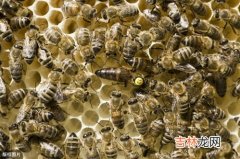DUCK 谣言检测《DUCK: Rumour Detection on Social Media by Modelling User and Comment Propagation Networks》
论文信息
论文标题:DUCK: Rumour Detection on Social Media by Modelling User and Comment Propagation Networks论文作者:Lin Tian, Xiuzhen Zhang, Jey Han Lau论文来源:2022 , NAACL论文地址:download 论文代码:download1 Introduction本文的模型研究了如何充分利用用户和评论信息 , 对比之前的方法 , 有以下不同:
(1) we model comments both as a:
(i) stream to capture the temporal nature of evolving comments;
(ii) network by following the conversational structure (see Figure 1 for an illustration);
(2) our comment network uses sequence model to encode a pair of comments before feeding them to a graph network, allowing our model to capture the nuanced charac- teristics (e.g. agreement or rebuttal) exhibited by a reply;
(3) when modelling the users who engage with a story via graph networks, we initialise the user nodes with encodings learned from their profiles and characteristics of their “friends” based on their social networks.
2 Problem Statement

文章插图
3 Methodology总体框架:

文章插图
包括如下几个部分:
(1) comment tree: models the comment network by following the reply-to structure using a combination of BERT and graph attentional networks;(2) comment chain: models the comments as a stream using transformer-based sequence models;(3) user tree: incorporates social relations to model the user network using graph attentional networks;(4) rumour classifier: combines the output from comment tree, comment chain and user tree to classify the source post.
请注意 , user tree 的网络结构不同于 comment tree 的网络结构 , 因为前者同时捕获 comment 和 reposts/retweets , 但后者只考虑 comment(Figure 1) 。
3.1 Comment Tree基于 GNN 的建模 comment 之间的关系的模型通常使用的是简单的文本特征(bag-of-words) , 忽略了 comment 之间的微妙关系("stance" or "deny")关系 。
所以 , 本文采用预训练语言模型 BERT 和 GAT 去建模 comment tree , 具体参见 Figure 2:

文章插图
首先 , 使用 BERT 去处理一对 parent-child posts , 然后使用 GAT 去建模整个 conversational strucure。( self-attention 在 parent-child 之间的词产生细粒度的分析)
以 Figure 2 中的 comment tree 为例 , 这意味着我们将首先使用 BERT 处理以下几对 comments {(0, 0),(0, 1),(0, 2),(2, 6),(2, 7),(6, 9)}:
$h_{p+q}=\mathrm{BERT}\left(\mathrm{emb}\left([C L S], c_{p},[S E P], c_{q}\right)\right)$
其中 , $c$ 表示 text , $emb()$ 表示 embedding function , $h$ 表示由 BERT 产生的 [CLS] 标记的上下文表示 。
为了模拟 conversational network structure , 本文使用图注意网络 GAT 。为了计算 $h_{i}^{(l+1)}$ , 在迭代 $l+1$ 次时对节点 $i$ 的编码:
$\begin{array}{l}e_{i j}^{(l)} &=&\operatorname{LR}\left(a^{(l)^{T}}\left(W^{(l)} h_{i}^{(l)} \oplus W^{(l)} h_{j}^{(l)}\right)\right) \\h_{i}^{(l+1)} &=&\sigma\left(\sum\limits _{j \in \mathcal{N}(i)} \operatorname{softmax}\left(e_{i j}^{(l)}\right) z_{j}^{(l)}\right)\end{array}$
为了聚合节点编码以得到一个图表示($\left(z_{c t}\right)$) , 探索了四种方法:
root:Uses the root encoding to represent the graph as the source post
$z_{c t}=h_{0}^{L}$
$\neg root$: Mean-pooling over all nodes except the root:
$z_{c t}=\frac{1}{m} \sum_{i=1}^{m} h_{i}^{L}$
经验总结扩展阅读
- 316不锈钢怎么检测
- 绿豆不能用铁锅煮谣言
- RDEA 谣言检测《Rumor Detection on Social Media with Event Augmentations》
- 二手车检测项目有哪些
- 谣言检测《Data Fusion Oriented Graph Convolution Network Model for Rumor Detection》
- ClaHi-GAT 谣言检测《Rumor Detection on Twitter with Claim-Guided Hierarchical Graph Attention Networks》
- 探界者胎压检测怎么用
- PSIN 谣言检测——《Divide-and-Conquer: Post-User Interaction Network for Fake News Detection on Social Media》
- PLAN 谣言检测——《Interpretable Rumor Detection in Microblogs by Attending to User Interactions》
- 谣言检测——《Debunking Rumors on Twitter with Tree Transformer》











